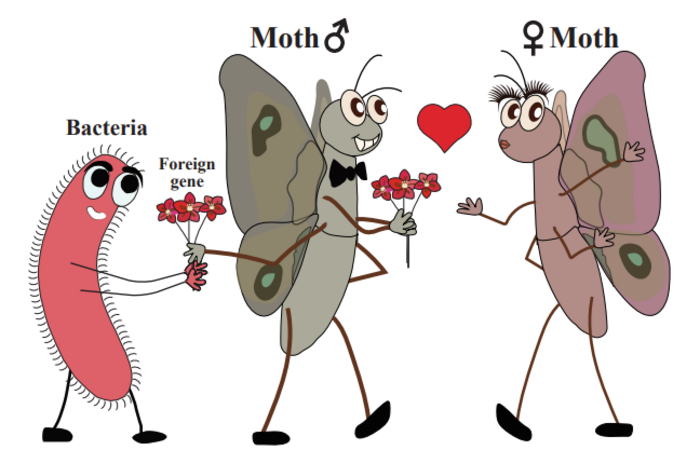Microbes and plants may have given insects an evolutionary benefit, hundreds of millions of years ago, by transferring genes to them via horizontal gene transfer. Scientists observed that more than 1,400 genes from bacteria, viruses, fungi, and plants were found in 218 insect species, including butterflies and moths, in a study published in the journal Cell on July 18th, 2022.
 Insects use genes from bacteria for courtship. Image Credit: Yang Li Liu & Xing Xing Shen
Insects use genes from bacteria for courtship. Image Credit: Yang Li Liu & Xing Xing Shen
According to the research, these genes may have been important for insect evolution since they allowed them to grow favorable characteristics in mating behavior, nutrition, growth, and adaptation to environmental shifts.
Horizontal gene transfer (HGT) between microbes is relatively common. For instance, bacteria use this method to spread antibiotic resistance genes among species, but researchers have recently focused on the occurrence in insects and microbes or plants.
Previous studies have shown that HGT may have contributed to insect biodiversity, but nobody knew how large a role it plays in this process. Since there are a lot of high-quality insect genomes available for our analysis, I thought that now is a good time to systematically investigate how prevalent HGT is in insects.”
Xing-Xing Shen, Study Senior Author and Evolutionary Biologist, Zhejiang University
Shen’s group at Zhejiang University began this project with Antonis Rokas, an evolutionary biologist at Vanderbilt University, by collecting 218 high-quality insect genome samples from 11 of 19 species-rich insect orders.
They were able to generate an evolutionary tree, define out-of-place genes more frequently found in non-animal genomes, and investigate what factors led to the fate of HGT in insects using the data.
There were HGT events everywhere we looked. However, we don’t know whether these transfers of genes are beneficial to the insects, or even the functions for most of these genes.”
Xing-Xing Shen, Study Senior Author and Evolutionary Biologist, Zhejiang University
He enrolled with the assistance of another expert, Jianhua Huang of Zhejiang University, who analyses insect gene functions.
“Shen walked into my office with a list of more than 1,400 genes, and we had to decide where to start,” Huang says. The team decided to check the purpose of LOC105383139, the most common foreign gene with no known characteristics in insects.
“This gene was horizontally introduced into nearly all moths and butterflies from a donor in the bacterial genus Listeria,” they account in the study. This means that this gene has been present in the genome since the common ancestor of moths and butterflies more than 300 million years ago.
Researchers chose to remove this ancient gene from diamondback moths, which are a pest of broccoli and cabbage, and see what functions it has.
“Surprisingly, we saw those moths lacking this gene cannot produce many viable eggs,” Huang says. “Then, we found that the gene influences the male courtship behavior.”
The researchers intend to conduct additional research into the mechanisms underlying how this gene helps insects mate more successfully and whether it can be used as a pest-control tool.
Source:
Journal reference:
Li, Y., et al. (2022) HGT is widespread in insects and contributes to male courtship in lepidopterans. Cell. doi.org/10.1016/j.cell.2022.06.014.